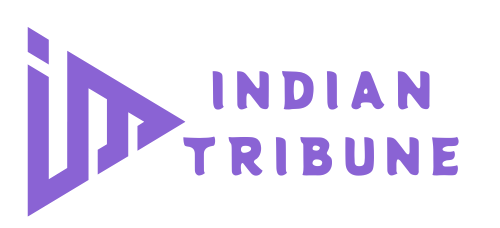Open-source software (OSS) has been a transformative force in technology, fostering innovation, transparency, and collaboration. From its origins in early computing to its role in powering modern tech giants, open source has continually reshaped the digital landscape. Today, we find ourselves at the cusp of a new era: the New Open-Source Frontier NOFS. This emerging frontier reflects the evolution of open-source practices and technologies, encompassing cloud computing, artificial intelligence (AI), blockchain, and new business models. Understanding NOFS is crucial for navigating the future of technology and collaboration.
Cloud Computing and Infrastructure as Code
One of the most significant shifts defining NOFS is the integration of cloud computing and infrastructure as code (IaC). Traditionally, open-source projects focused on standalone applications or tools. However, the rise of cloud computing has shifted the spotlight to managing and automating infrastructure.
Kubernetes, Terraform, and Docker are pivotal open-source tools in this realm. Kubernetes orchestrates containerized applications across clusters of machines, Terraform manages infrastructure through code, and Docker simplifies containerization and deployment. These tools have revolutionized how organizations deploy, manage, and scale their IT resources.
Advantages:
- Scalability and Flexibility: Open-source tools like Kubernetes provide scalable solutions that can handle varying workloads, making it easier for organizations to grow and adapt their infrastructure without additional licensing costs.
- Community Collaboration: The open-source nature of these tools means they benefit from contributions by a global community, leading to continuous improvements and rapid problem-solving.
- Cost Efficiency: By using open-source tools for cloud infrastructure, organizations can avoid expensive proprietary solutions, reducing overall IT costs.
Disadvantages:
- Complexity: Implementing and managing these tools can be complex and requires specialized knowledge. Organizations might face a steep learning curve and need to invest in training or expert consultation.
- Security Concerns: Open-source tools, being publicly available, can be vulnerable to security threats if not properly managed and updated. This necessitates robust security practices and regular monitoring.
AI and Machine Learning in NOFS
Artificial intelligence (AI) and machine learning (ML) are at the forefront of NOFS hoodie with open-source frameworks like TensorFlow, PyTorch, and Hugging Face leading the charge. These frameworks democratize access to advanced AI and ML tools, enabling a wide range of applications from natural language processing to computer vision.
Advantages:
- Democratization of AI: Open-source AI frameworks allow researchers, startups, and developers to experiment with and contribute to cutting-edge technology without the constraints of proprietary software.
- Flexibility: Open-source tools offer the flexibility to modify and adapt algorithms to suit specific needs, fostering innovation and customization.
Disadvantages:
- Resource Intensiveness: Developing and training sophisticated AI models requires significant computational resources and data. Smaller organizations may struggle to compete with tech giants that have more substantial infrastructure.
- Support Challenges: While open-source frameworks are powerful, they may lack formal support. Developers often rely on community forums for troubleshooting, which can be less reliable compared to commercial support.
Sustainability and Business Models
A critical aspect of NOFS is ensuring the sustainability of open-source projects. Many projects rely on volunteer contributions or small teams, which can lead to challenges in maintaining long-term viability.
Open-core business models offer a solution by combining free open-source software with paid features or services. Companies like Red Hat and Elastic have successfully implemented this model, allowing them to generate revenue while supporting open-source projects.
Advantages:
- Sustainability: By monetizing certain aspects of their software, companies can fund development and support, ensuring that open-source projects remain active and evolving.
Disadvantages:
- Some users may feel excluded from accessing advanced features.
Decentralization and Blockchain
Decentralization, driven by blockchain technology, is another key element of NOFS. Projects like Bitcoin and Ethereum represent open-source solutions that operate on decentralized networks, shifting control from central authorities to distributed systems.
Advantages:
- Transparency and Trust: Open-source blockchain projects offer transparency, allowing anyone to audit the code and verify the system’s integrity. This fosters trust among users and developers.
- Decentralized Governance: Decentralized Autonomous Organizations (DAOs) enable community-based governance, reducing reliance on centralized control and allowing more democratic decision-making.
Disadvantages:
- Environmental Impact: Many blockchain networks, particularly those using proof-of-work mechanisms, are energy-intensive and raise concerns about their environmental footprint.
- Regulatory Uncertainty: The decentralized nature of blockchain projects presents challenges for regulation, leading to potential legal and compliance issues that can affect the stability and adoption of these technologies.
Conclusion
The New Open-Source Frontier (NOFS) marks a significant evolution in the open-source movement.
As NOFS continues to evolve, it will be essential for developers, organizations, and policymakers to engage with these changes thoughtfully. Balancing collaboration, accessibility, and sustainability will be key to ensuring that open-source remains a powerful force for positive change in the digital age. Embracing the principles of NOFS while addressing its challenges will help drive the next wave of technological innovation and ensure that open-source continues to thrive.




